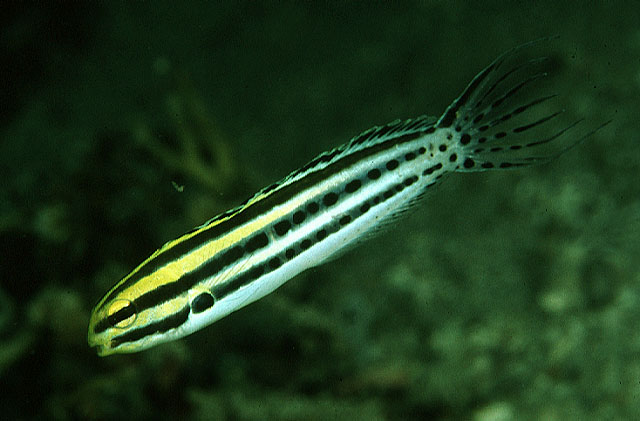| Blenniidae (Combtooth blennies), subfamily: Blenniinae |
| 11 cm TL (male/unsexed) |
|
reef-associated; marine; depth range 1 - 20 m |
| Western Pacific: Indochina to Papua New Guinea, north to Ryukyu Islands, south to northwestern Australia and the Great Barrier Reef. Replaced by Meiacanthus kamoharai in southern Japan. |
|
Dorsal spines (total): 4-4; Dorsal soft rays (total): 25-28; Anal spines: 2-2; Anal soft rays: 14-16. Identified by the lined pattern on the body that ends in spots on the tail-fin base (Ref. 48636). |
| A solitary species found in sheltered lagoon and seaward reefs (Ref. 9710, 48636). Several adults together occasionally in close vicinity to each other (Ref. 48636). Oviparous. Eggs are demersal and adhesive (Ref. 205), and are attached to the substrate via a filamentous, adhesive pad or pedestal (Ref. 94114). Larvae are planktonic, often found in shallow, coastal waters (Ref. 94114). Several geographical variations and is mimicked by another blenny Petroscirtes breviceps (Ref. 48636). Both fang and venom gland are present (Ref. 57406). |
|
Least Concern (LC); Date assessed: 28 March 2009 Ref. (130435)
|
| venomous |
Source and more info: www.fishbase.org. For personal, classroom, and other internal use only. Not for publication.
